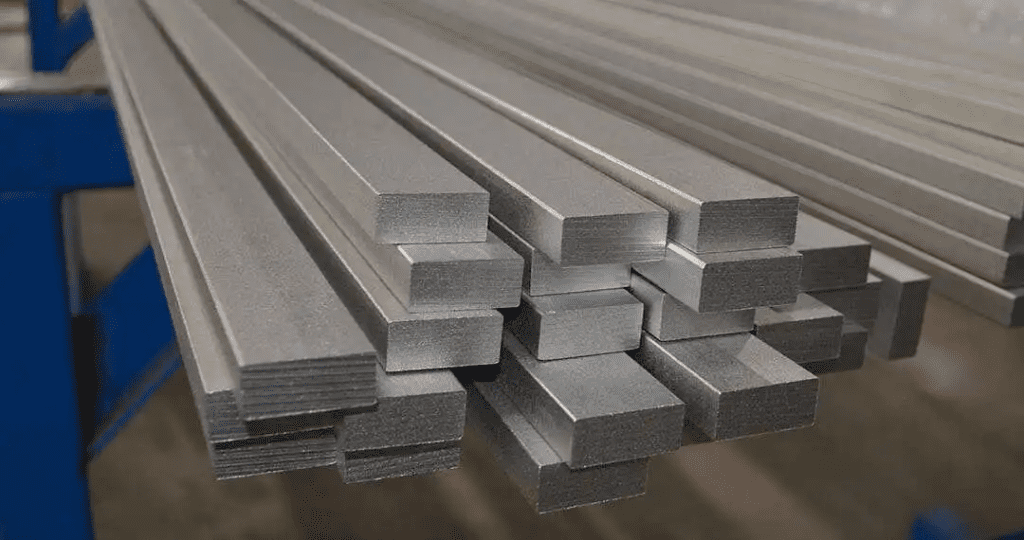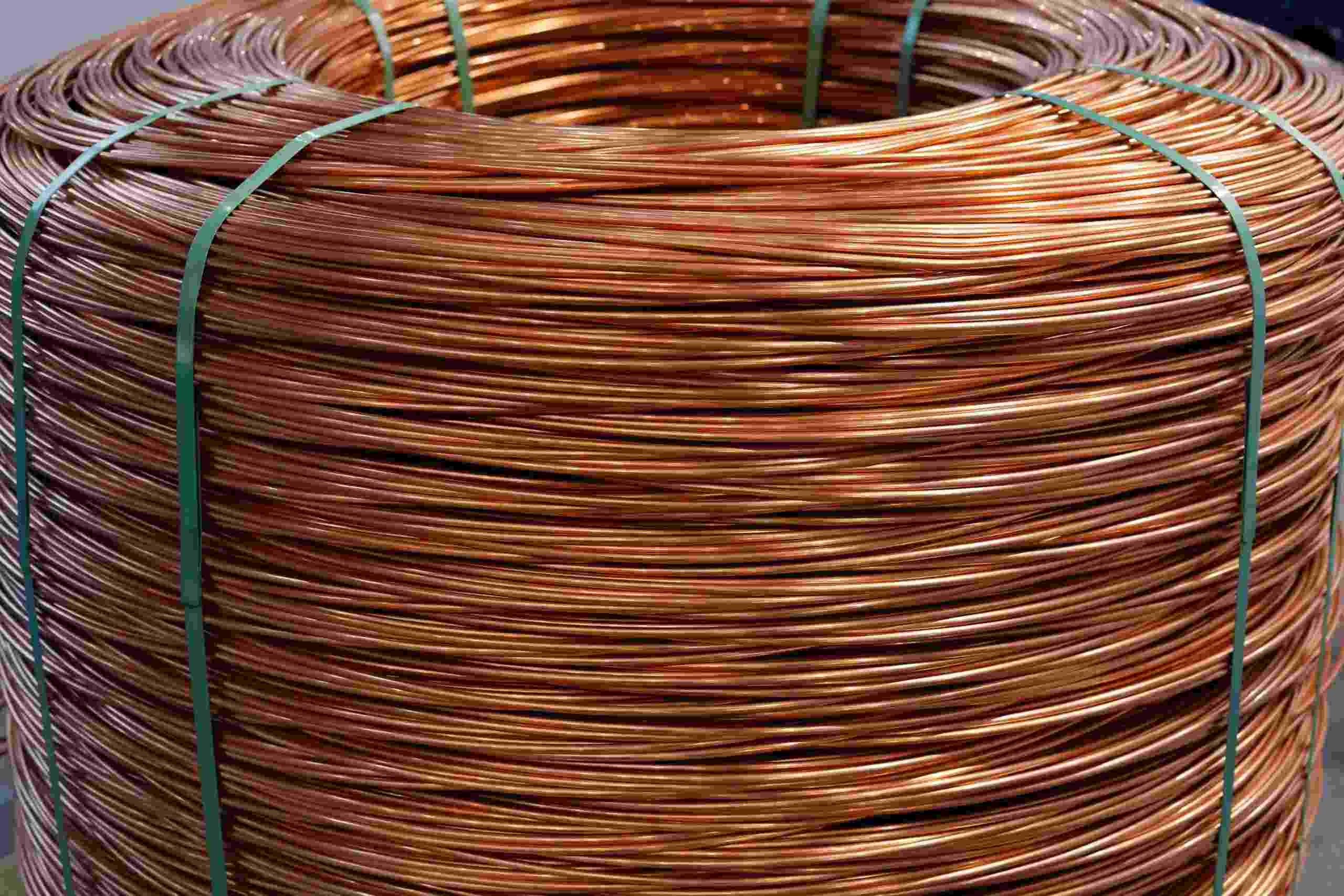Next to silver, copper is the most conductive material available, with copper wiring 66% more conductive than aluminum wires of the same size.
To transfer the same amount of current in an 8 AWG copper wire, a 6 AWG aluminum conductor up to 25% thicker in size is required. However, copper is prone to corrosion and can turn greenish when exposed to oxygen—this effect can be seen on old pennies or the Statue of Liberty.
By removing the oxygen from the copper, oxygen-free copper (OFC) is produced, dramatically improving its corrosion resistance. Using OFC has obvious benefits, such as higher current flow, improved conduction efficiency, and reduced environmental strain.
Below, we detail the different oxygen-free copper grades and some of the benefits and challenges of using OFC so you can make the right purchase for your application.
Oxygen-Free Copper Grades and Their Benefits
Oxygen-free copper is copper material that has undergone an electrolytic refining process to remove all (almost 99.99%) but a trace level of oxygen. By removing oxygen and other impurities, the copper attains superior electrical conductivity and becomes less susceptible to corrosion.
Types of Oxygen-Free Copper
There are three oxygen-free copper grades, detailed below.
- C10100: C10100 is designated as OFE, or oxygen-free electronic, and achieves a minimum electrical conductivity rating of 101% IACS under annealed conditions. C10100 is recommended for applications requiring high ductility and electrical and thermal conductivity.
- C10200: C10200 is 99.95% pure copper. It is an ideal choice when the material needs a strong resistance against stress corrosion cracking. It also has excellent conductivity, welding, and soldering characteristics, the same as C10100.
- C11000: C11000 is also known as electrolytic tough pitch copper or ETP. Though it is 99.9% pure copper, ETP copper contains more oxygen than OFE copper, with OFE having less than 10 ppm of oxygen, whereas ETP contains a minimum of 150 ppm of oxygen. However, ETP is the most commonly used grade copper for its inherent fabrication qualities.
Below is a summary of the oxygen-free copper (OFC) grades, along with their oxygen contents, high purity levels, and applications.
| OFC Grade | Oxygen Content | Purity | Application |
| C10100 | 0.0005% | 99.99% | Automotive rectifiers
Bus conductors Coaxial cables Transistor component base Cavity resonators Glass-to-metal seals |
| C10200 | 0.001% | 99.95% | Electrical conductors
Coaxial cables Billet mold tube Klystrons Heat sinks |
| C11000 | 0.02%- 0.04% | 99.9% | Welding fixtures
Lean-in wires Ground straps Anodes Bus conductors |
Benefits of Using Oxygen-Free Copper
Using OFC can be beneficial for specific applications. Below, we explore some of these benefits in more detail.
Exceptional Electrical Conductivity
During the manufacturing of OFC, the copper is processed with carbon to remove any oxygen present. High purity, coupled with the absence of oxygen, allows more currents to pass through the same conductor size. Thus, OFC is specifically used for battery cables, induction coils, and space heaters.
High Thermal Capacity
Due to higher thermal conductivity, OFC elemental copper wires do not heat up as quickly as other metals, such as aluminum. As a result, they also have superior thermal strength and thermal conductivity. Industries heavily rely on them for high-temperature applications such as induction heating furnaces.
Excellent Resistance to Hydrogen Embrittlement
Oxygen-free coppers achieve excellent resistance against hydrogen embrittlement occurring under wet electrochemical environments. Because of its malleability, weldability, and lack of reactivity in oxygen-free waters, Finland is even using copper canisters to store nuclear waste inside an encapsulation plant.
Excellent Fabrication Properties
All oxygen-free copper grades are good for machining, with an excellent machinability rating of 20 (100 is more difficult to machine). They have excellent hot-working and cold-working properties. All grades are ideal for soldering, brazing, and gas shielding arc welding. However, spot welding and seam welding are not recommended.
|
Buy Certified High-Quality Metals for Industrial Solutions |
||
|
New Aluminum |
New Steel |
New Stainless Steel |
 |
 |
 |
| Reliable supply: Consistent, certified aluminum stock you can trust. High-quality material: Superior-grade aluminum for precision needs. Custom cuts: Accurate cuts down to thousandths of an inch. |
Durability and strength: Reliable for projects needing long-lasting, tough materials. Cost-effective: Quality steel that offers strength without breaking the bank. Custom cutting: Precise cuts tailored to exact needs with top-tier cutting tools. |
Sustainability: Highly eco-friendly as the most recyclable metal on earth. High durability: Resistant to corrosion and wear, ensuring long-lasting performance. Custom precision cuts: Tailored to your specifications with quick, accurate results. |
Superior Thermal Conductivity for Efficient Heat Management
Oxygen-free copper (OFC) is a high-purity copper alloy with oxygen levels below 0.001%, achieved through an advanced refining process. This includes direct conversion techniques involving carbonaceous gases and controlled environments to prevent oxygen absorption.
The result is copper alloys C10100 and C10200, known for their excellent electrical and thermal conductivity. Oxygen-free copper’s primary properties include:
- High electrical conductivity: Superior to average conductivity found in other copper products, making OFC ideal for electrical and electronic applications.
- High thermal conductivity: Efficient in heat dissipation, essential for applications like microwave tubes and transistor components.
- High ductility and workability: Allows the material to be easily formed into various shapes, beneficial for vacuum seals and other intricate components.
- Resistance to hydrogen embrittlement: Unlike standard copper, OFC does not become brittle when exposed to hydrogen at high temperatures, making it suitable for cryogenic applications.
Challenges with Using Oxygen-Free Copper
Among all of the oxygen-free copper grades, C101 differs from the rest in terms of its processing method, as the smelting and pouring of C101 are carried out in an oxygen-free environment.
Considering the complexity of production, C101 coppers are the most expensive grade; thus, it is imperative to utilize C101 carefully, especially during the cutting process, to minimize waste.
Suppose you don’t have the required infrastructure to precisely cut C101 or the expertise to recycle waste to your advantage. In that case, it might be beneficial to outsource your metal sawing to a reliable metal supplier.
A Reliable Local Supplier of OFC and Other Metals
Industrial Metal Service has been meeting the metal requirements of fabricators and machinists from the San Francisco Bay Area and beyond for more than two decades.
We stock a wide range of metals, including aluminum, titanium, steel, and copper, and offer fair prices, whether you need new metals sourced straight from U.S. mills or verified remnants.
We also offer convenient scrap recycling services to help you convert your processed scrap into profit and precision metal sawing to save you time, money, and resources.
 Angle
Angle Cast Plate
Cast Plate Diamond Plate
Diamond Plate Flat Bar
Flat Bar Plate
Plate Round Bar
Round Bar Square Bar
Square Bar Square Tubing
Square Tubing Round Tubing
Round Tubing Angle
Angle Channel
Channel Diamond Plate
Diamond Plate I Beam
I Beam Round Bar
Round Bar Sheet
Sheet Square tubing
Square tubing Round Tubing
Round Tubing Rectangular Tubing
Rectangular Tubing Plate
Plate Rectangular Bar
Rectangular Bar Rectangular Tubing
Rectangular Tubing Round Bar
Round Bar Sheet
Sheet Square Bar
Square Bar Square Tubing
Square Tubing
